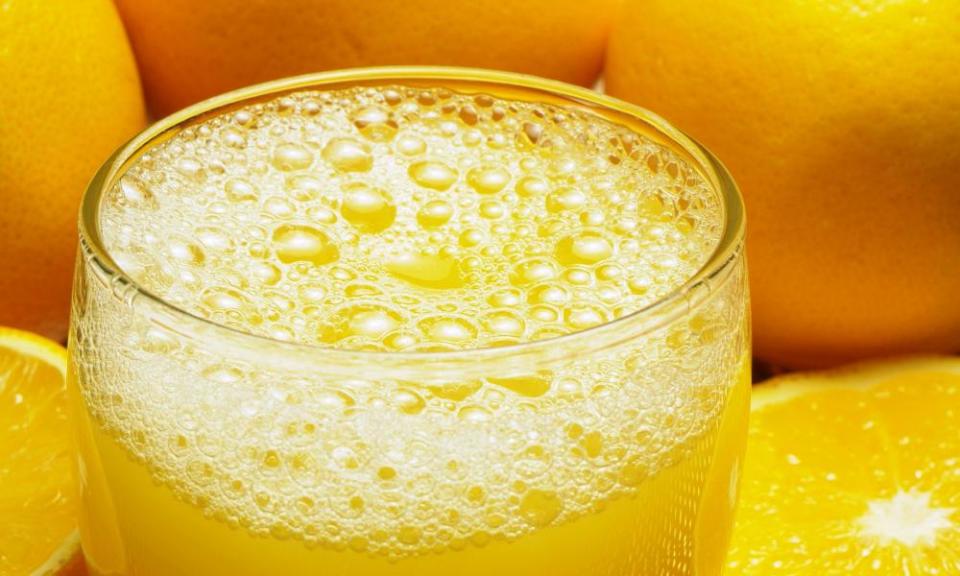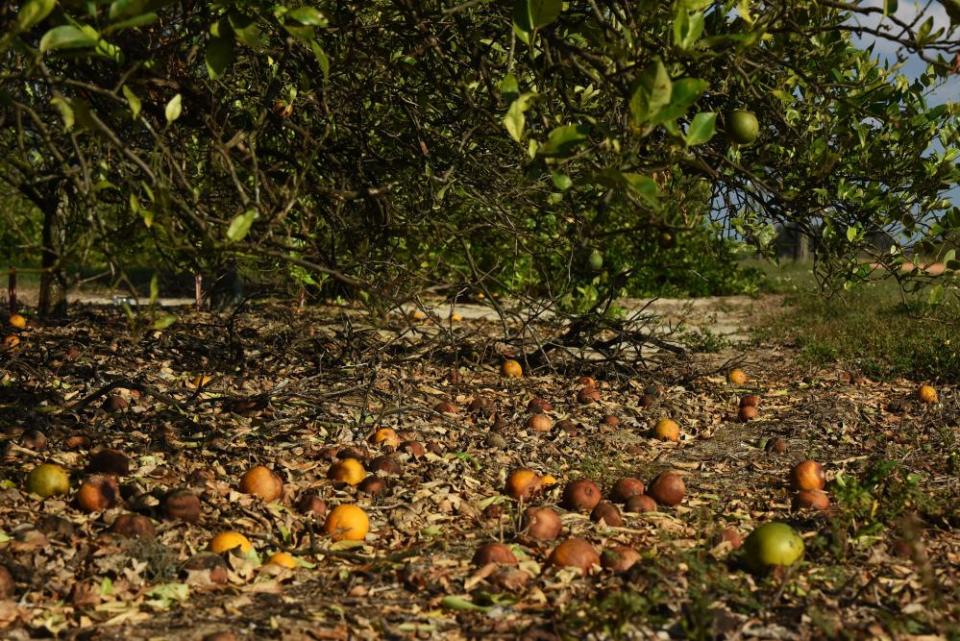The great orange juice trading rally – and why a big squeeze could lie ahead

Eddie Murphy jumps into Dan Aykroyd’s arms, the pair shouting in delight. Playing Billy Ray Valentine and Louis Winthorpe, they’ve just gamed the orange juice futures market and are in line for a fortune as the denouement of 1983’s Trading Places plays out.
Four decades on, the film and the breakfast drink commodity remain synonymous with the more esoteric corners of the stock market. But global investors have more reason than in most years to pay attention to orange juice trading over more conventional commodities such as oil, gas, wheat and metals. The price of OJ futures has surged of late, up 92% since the start of the year, relentlessly setting fresh highs.
The contracts, for future deliveries of frozen concentrated orange juice, traded on the Intercontinental Exchange in New York, were changing hands at $3.97 (£3.27) a pound on the spot market this week. Its part of a global market for “soft commodities”, which includes everything from cocoa, sugar and coffee to soya beans and pork bellies.
The price rise has come as a result of a devastatingly poor orange harvest in Florida this year. The Sunshine State typically produces more than 90% of US orange crops annually, but producers have been hit by the combination of a long-term decline in the lucrative industry and the triple whammy of Hurricanes Ian and Nicole last autumn followed by freezing conditions. Production levels are expected to be the lowest level for more than a century this year.
The hurricanes wiped out about 10% of Florida’s orange trees just as farmers began harvesting in September 2022, while an incurable citrus greening disease has been ravaging trees for years. The disease, also known as Huanglongbing or yellow dragon disease, typically kills off crops within five years. (In Trading Places, Murphy and Aykroyd use a fake crop report to scam the market. Wall Street eventually made it illegal to trade on inside information obtained from the government, in legislation nicknamed the “Eddie Murphy rule”.)
Florida’s travails have proved a boon for Brazil, the world’s largest orange juice producer, which has been exporting record volumes to the US.
Like the traders in energy commodities, volatility and a vibrant market are as important as the actual spot price: the choppier the market, the higher the potential earnings. The investment case broadly runs: OJ is a bet on climate change and emerging markets. Unpredictable weather conditions – increased hurricane frequency in Florida, droughts in Brazil – spell supply shocks, and subsequent volatility. (OJ is not alone in being affected by this year’s extreme weather, which climate scientists say is in line with their predictions of the impact of greenhouse gas emissions. For example, European olive oil supplies have been badly affected.)
Agricultural commodity trading has traditionally been controlled by the so-called “ABCD group”, namely ADM, Bunge, Cargill and (Louis) Dreyfus. China’s Cofco are also a significant player, in a high consolidated industry, with 10 commodity traders in 2020 dominating a market worth half a trillion dollars. In OJ, trading is dominated by dedicated arms of big producers, including Louis Dreyfus, the 172-year-old business now controlled by Margarita Louis-Dreyfus, head of a family worth $3.6bn. Brazil’s Citrosuco and Cutrale – controlled by the Cutrale family – are also significant players.

For consumers, the biggest brands include PepsiCo’s Tropicana, as well as supermarket own brands. The global orange juice industry is worth more than $6bn, and by 2027 it is expected to grow to $7.6bn, Market Watch estimates. Even as rampant grocery price inflation has cooled, UK fruit juice inflation was 11.5% last month.
Orange juice consumption has broadly fallen in western countries in recent decades, particularly in the US where it exploded in the 1940s when frozen orange juice concentrate took off (see: Minute Maid). The pandemic spurred a brief revival: sales jumped as consumers desperately sought ways to improve their immunity to Covid-19.
Producers hope a growing middle class in emerging markets could open up a new consumer base, but short-term consumption patterns appear to be returning to pre-pandemic levels. Meanwhile, a surge in production in California – which could exceed Florida for the first time – may soon puncture high prices.
The futures rally has attracted the interests of day traders and social media users, who are now speculating on when the top of the market will land. Jay Kaeppel, a senior research analyst at Sentimentrader.com, says the price run bears comparison to huge spikes in the price of sugar in the 1970s, and silver later that decade – as well as the GameStop “memestock” shares surge (now immortalised at the box office in this autumn’s Dumb Money).
“The problem is that trying to pick the top is like strapping yourself to a rocket headed higher and hoping it runs out of fuel. By the time it does, you may already be dead – financially in terms of trading, and literally in terms of actual rocket-riding,” Kaeppel jokes.
Russ Mould, an investment director at AJ Bell, says: “A lot of professional traders look at OJ for a living, so the chances of a private individual having an information edge on them are pretty slim.”
Kaeppel adds that short-sellers may be considering huge gains from any sharp sell-off, as well as further gains when any subsequent bounceback fades. If that happens, The Big Short may provide more apt Hollywood inspiration for investors than Trading Places.
Comm-oddities: some of traders’ more unusual bets
Since the Dutch “Tulipmania” of the 17th century, financial bubbles have emerged around everything from rhodium to bitcoin, but somewhat less volatile niche markets have sprung up too. Here’s some options for a varied investment portfolio:
Skimmed milk powder – “SMP”, as it is known on trading floors, results from the partial removal of fat and water from pasteurised milk including UHT milk, cheeses and yoghurts. Prices have waned this year after hitting seven-year highs last year due to shortages in EU dairy production.
Sunflower seed futures – another hot agricultural trade, it has been spurred to record highs by ructions in global commodity markets caused by Russia’s invasion of Ukraine.
Frost – weather futures may feel like betting on Liz Truss versus a lettuce, but frost, rainfall and snowfalll seasonal futures trade on the Chicago Mercantile Exchange. Some contracts are based on temperature differences from an average, others on number of days frost occurs, and others on the amount of snowfall in a given location.

 Yahoo Finance
Yahoo Finance 